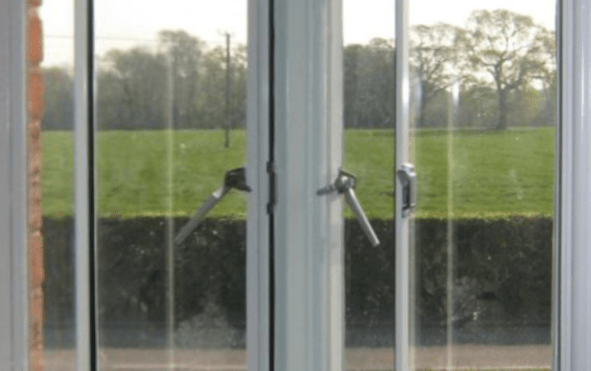Secondary glazing is a popular option for homeowners looking to improve the insulation and energy efficiency of their windows. Here, we’ll look at the pros and cons to consider when deciding whether secondary glazing is right for you.
Quick FAQs
[rank_math_rich_snippet id=”s-ca94b0df-a435-4431-94ea-acc61e7e9dce”]
What is secondary glazing?
Secondary glazing involves adding an additional layer of glazing on the interior side of the existing windows. This creates a barrier of insulating air within the window cavity. Secondary glazing can be permanent but is often added as a temporary measure.
What are the advantages of secondary glazing?
- Improved insulation: Secondary glazing can significantly improve the insulation of your windows, helping to reduce heat loss in the winter and lower indoor temperatures in the summer.
- Increased energy efficiency: By reducing heat loss, secondary glazing helps to lower your energy bills and reduce your carbon footprint.
- Minimising condensation: By completely sealing off your existing windows, secondary glazing can minimise condensation when fitted inside your single- or double-glazed unit, if fitted well.
- Better sound insulation: The additional layer of glazing will also reduce noise levels in your home, making it ideal for those living in noisy areas or those who like to turn up the volume of their music.
- Cost-effective: Compared to full window replacement, secondary glazing is a much more cost-effective solution for improving the insulation and energy efficiency of your windows.
- Less time to install: Because the existing windows don’t need to be removed when adding the secondary glazing, the process is quicker than having new double- or triple-glazed windows fitted.
- Suitable for listed properties: If you live in a listed or heritage building, double glazing may not be an option. Secondary glazing preserves the original character of period properties while offering the benefits mentioned above.
What are the disadvantages of secondary glazing?
- Loss of natural light: The additional layer of glazing can reduce the amount of natural light entering your home, especially if you choose a thicker glazing material.
- Aesthetic impact: Secondary glazing can alter the appearance of your windows and some people may find it unsightly, especially if it isn’t well-fitted.
- Difficulty of installation: Secondary glazing can be difficult to install, especially if you have large or complex window shapes. It may also require professional installation to ensure proper fit and insulation.
- Difficulty with cleaning: Unlike double glazing, with two glass surfaces to clean, with secondary glazing, there are four. It can pretty tricky to reach in between the glass panes to clean them.
What are the different types of secondary glazing?
- Permanent uPVC secondary glazing: Arguably the best type of secondary glazing, this solution requires fitting an internal secondary window behind your existing single-glazed window. They are best for reliability and thermal efficiency. These windows should be installed by a professional.
- Permanent wooden secondary glazing: Wooden secondary glazing means the glass panes have wooden frames. The frames come in a variety of different styles and colours, meaning you can choose a frame to match your existing windows. These windows are not the most cost-effective option and will be higher maintenance than the uPVC version.
- Magnetic secondary glazing: Magnetic secondary glazing uses magnetic strips to attach the supplementary pane to your existing windows. This is a low-cost option but a less reliable and more temporary solution than the previous two options.
- Secondary glazing film: The film is a thin, transparent sheet of plastic which is stuck to the existing window pane. This is the cheapest option and it’s easy to do yourself, but it offers minimal thermal benefit. Secondary glazing film needs to be carefully applied and even then, it doesn’t provide the best finish aesthetically.
Can I install secondary glazing myself?
You can buy secondary glazing DIY kits and install them yourself. The process for fitting secondary glazing is more flexible than fitting double glazing. Depending on the type of windows you have and the type of secondary glazing you are fitting, it can be fairly simple to install. However, as previously mentioned, if your windows are large or have a complex shape, the task will be significantly more challenging.
How does secondary glazing compare to double glazing or triple glazing?
Secondary glazing is a cheaper option than installing new double- or triple-glazed windows; secondary glazing could be as much as half the cost of double glazing.
Secondary glazing is more effective than double glazing when it comes to reducing noise pollution. This is because the two separate pieces of glass in secondary glazing act as independent barriers to the transmission of noise. The greater the cavity between the two panes of glass, the better the noise reduction.
While secondary glazing will increase the energy efficiency of your home by reducing heat loss, it is about half as effective as double glazing. Triple glazing offers the best thermal insulation.
Secondary glazing: what’s the verdict?
In conclusion, secondary glazing can be a great solution for homeowners looking to improve the insulation and energy efficiency of their windows, especially if it’s a temporary solution. You’ll reap the benefits of improved energy efficiency and noise reduction at a lower cost than replacing your windows.
However, it’s important to consider both the pros and cons of secondary glazing before making a decision and to think about the long-term as well as the short-term. Consider your priorities and what you most want to achieve from upgrading your windows.
Lastly, while secondary glazing can be a DIY project, we recommend that you use a reputable and experienced installer to achieve the best look and fitting.
Looking for advice on Secondary Glazing?
Speak to a member of our knowledgeable team and they will help you decide if secondary glazing is the right choice for you and your home.

